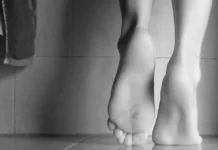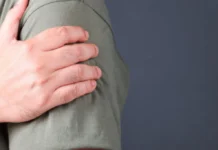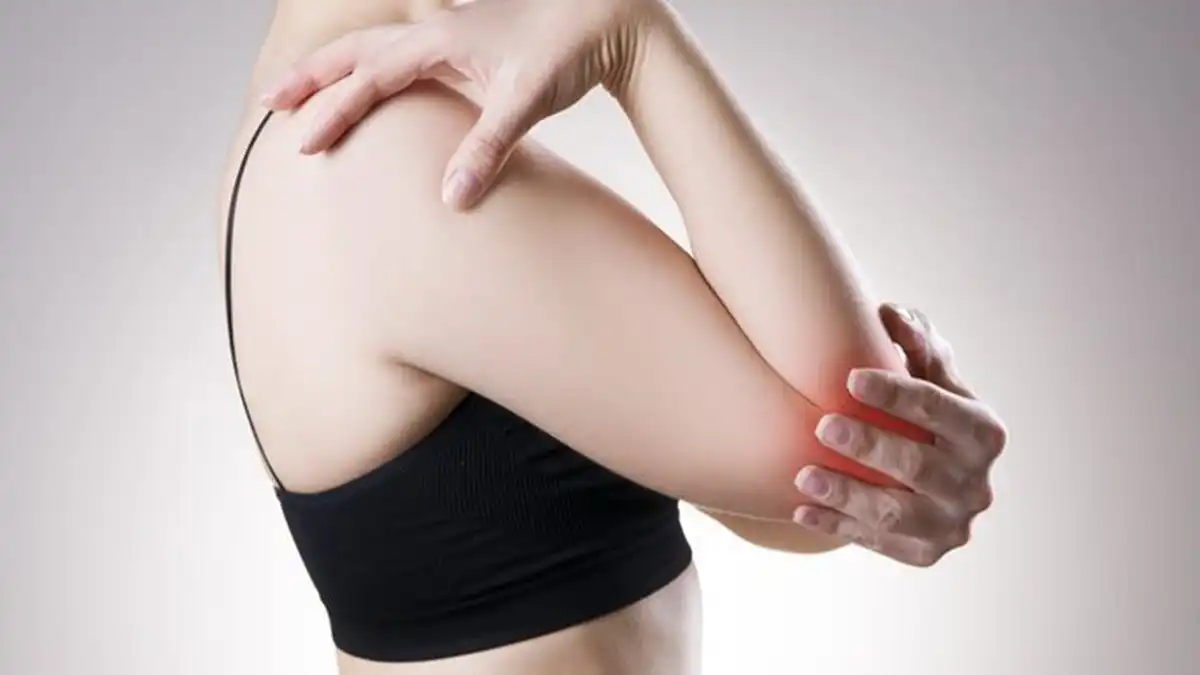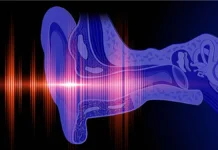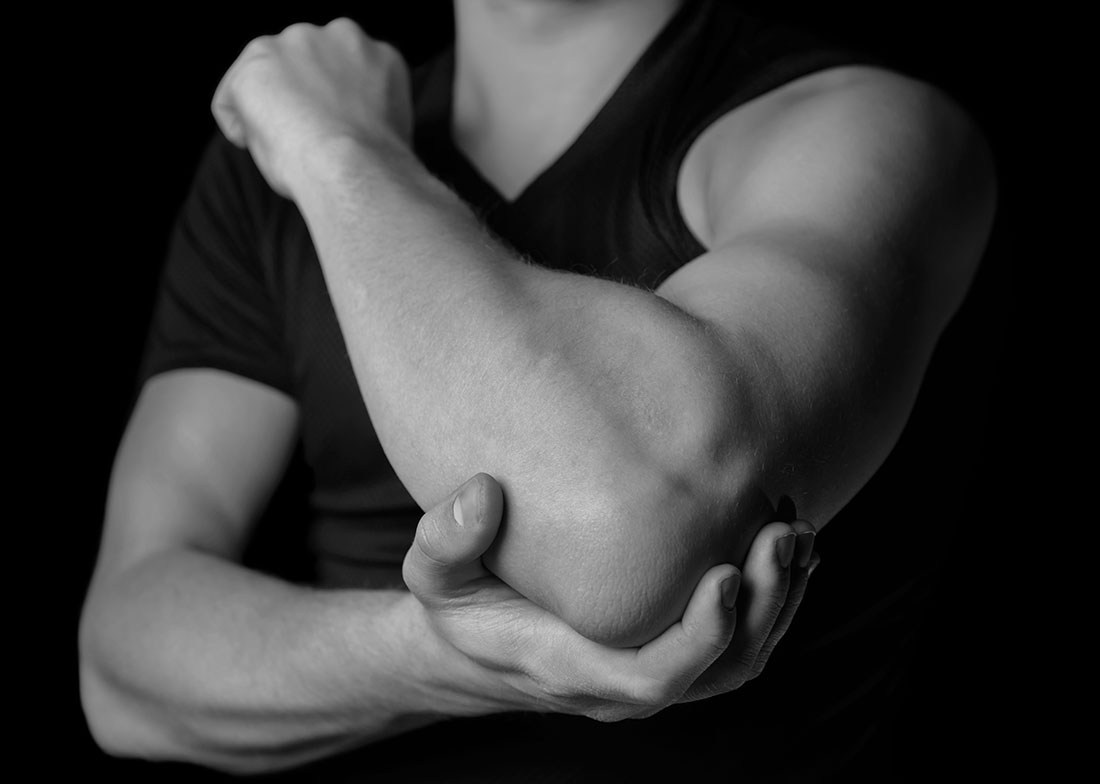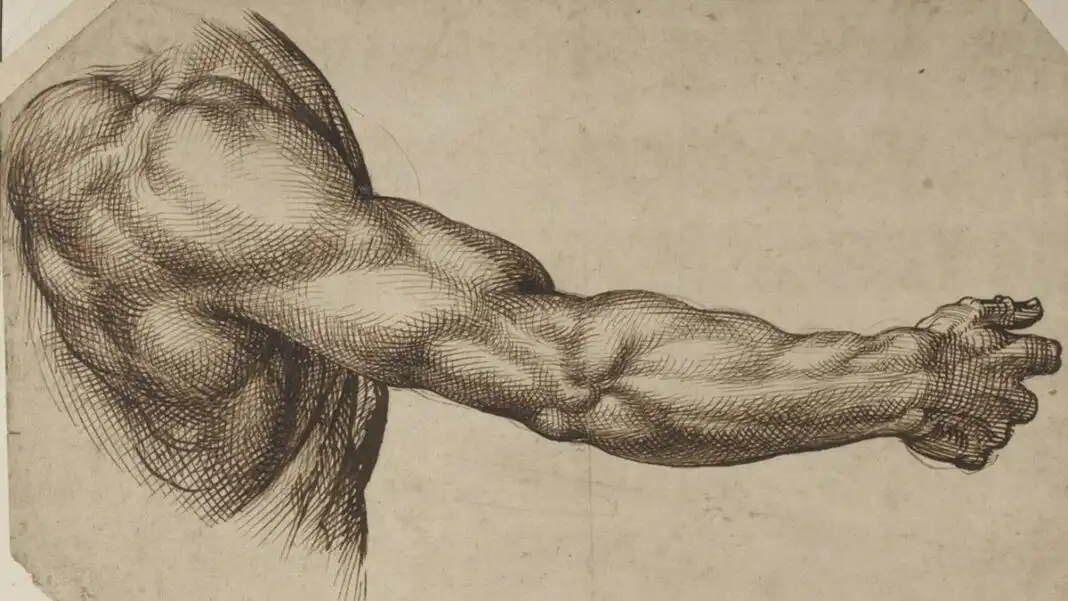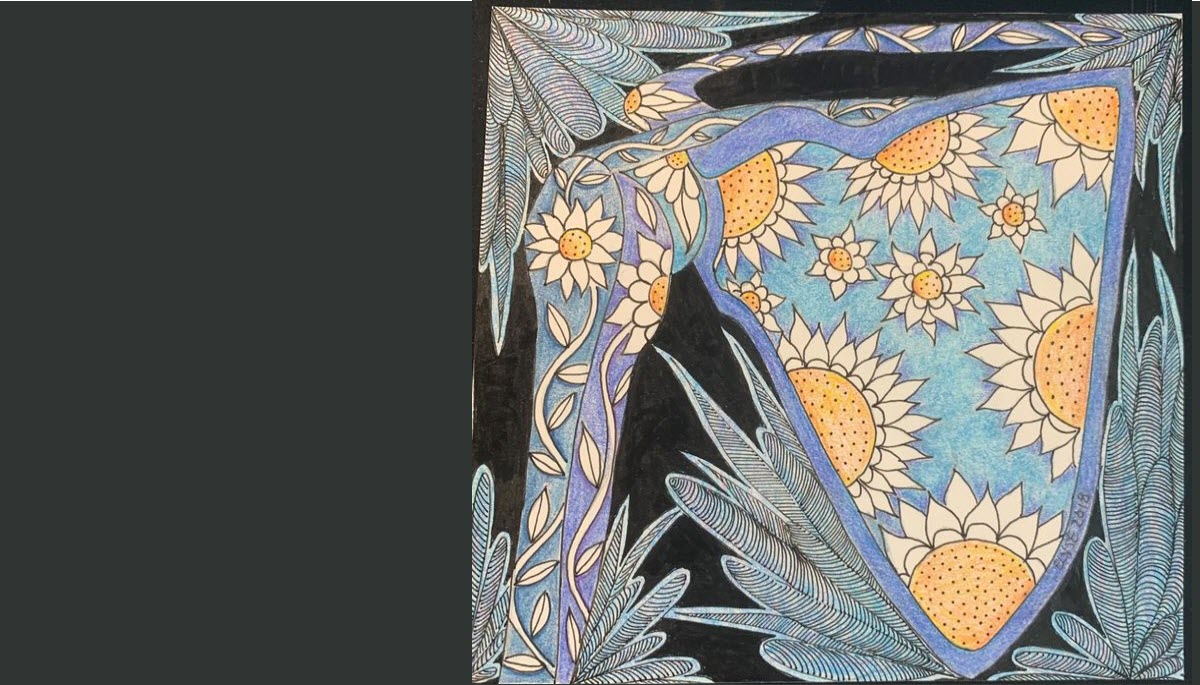Introduction
Supraspinatus tendonitis is a painful condition that affects the shoulder, often caused by inflammation or irritation of the supraspinatus muscle tendon. This muscle, located in the upper part of the shoulder, plays a crucial role in the mobility and stability of this complex joint. Understanding aspects of this condition, its treatment and means of prevention is essential for those suffering from this condition or seeking to prevent it.
Understanding Supraspinous Tendonitis:
Supraspinatus tendonitis often occurs as a result of repetitive arm movements, overuse, or direct trauma. Symptoms include persistent shoulder pain, made worse by moving the arm overhead. The pain may also radiate to the neck and arms. Activities such as lifting, throwing, and even simple movements can become painful for those suffering from this condition.
Anatomically, the supraspinatus tendon passes under the shoulder bone, called the acromion, in a narrow area called the subacromial strait. When this area is reduced, either by inflammation or anatomical shape, the tendon can become pinched, causing pain and inflammation.
Treatment of Supraspinous Tendonitis:
Treatment of supraspinatus tendinitis aims to relieve pain, reduce inflammation, and restore normal functionality to the shoulder. It may include anti-inflammatory medications, physical therapy sessions to strengthen surrounding muscles and improve mobility, and activity modifications to avoid movements that aggravate the condition.
In some cases, when conservative treatments do not provide adequate relief, more advanced options such as corticosteroid injections or, in extreme cases, surgery, may be considered. Surgery may involve releasing the subacromial space to reduce pressure on the tendon.
Prevention of Supraspinous Tendonitis:
Prevention of supraspinatus tendonitis relies on practices and habits that minimize risk factors. It is essential to adopt correct technique when performing activities involving the arm, avoiding excessive or repetitive movements that could stress the tendon. Strengthening your shoulder muscles and doing regular stretches can help maintain stability and flexibility in the joint.
Proper management of physical activities, especially for those who engage in repetitive movements in their work or hobbies, is crucial. Frequent breaks, alternating tasks and using ergonomic equipment can help reduce stress on the shoulder.

Causes
Supraspinatus tendonitis is usually caused by a combination of factors, including repetitive movements, overuse of the arm, or direct trauma. Here are some of the main causes of supraspinatus tendonitis:
LIST OF CAUSES
- Overuse and Repetitive Motions: Activities involving frequent overhead movements of the arm, such as throwing, lifting, or swimming, can cause overuse of the shoulder muscles, including the supraspinatus muscle. Over time, this can cause inflammation of the tendon.
- Age and Wear: The aging process can contribute to the progressive wear and tear of tendons, including the supraspinatus tendon. The risk of tendinitis increases with age.
- Poor Posture: Poor posture, especially when performing daily or work activities, can put excessive strain on the shoulder muscles and contribute to the development of tendinitis.
- Trauma and Injuries: Direct trauma, such as falls on the shoulder or accidents, can cause damage to the supraspinatus tendon, leading to inflammation and possibly tendinitis.
- Anatomy: Some individuals may have specific anatomy, such as a narrow subacromial strait, which can make the tendon more susceptible to pinching and irritation, contributing to the development of tendonitis.
- Occupational Factors: Certain occupations, such as those that involve repetitive arm movements or heavy use of the shoulder, may increase the risk of supraspinatus tendinitis
- Genetic Factors: Some individuals may have a genetic predisposition to developing tendon problems. Genetic variations can affect the structure and resilience of tendons, increasing the risk of tendonitis.
- Poor Exercise Habits: Poor exercise technique, whether related to weight training, sports, or other physical activities, can overwork the supraspinatus tendon and contribute to the development of tendinitis.
- Underlying Medical Conditions: Certain medical conditions, such as arthritis, diabetes, or other inflammatory conditions, may increase susceptibility to tendon problems, including supraspinatus tendinitis.
- Lack of Warm-up and Stretching: Failing to warm up properly before strenuous physical activity or neglecting stretching after exercise can increase stress on the tendons, leading to the development of tendinitis.
- Excessive Loading: Excessive use or carrying heavy loads repetitively can contribute to irritation and inflammation of the supraspinatus tendon.
- Smoking: Smoking can compromise blood circulation, which can negatively affect the ability of tendons to repair and regenerate.
- Muscle Deficits: A muscular imbalance, with surrounding muscles that are too weak or too tight, can place uneven pressure on the supraspinatus tendon, increasing the risk of tendinitis.
- Emotional Stress: Psychological and emotional stress can impact overall health, including tendon health. Prolonged stress can contribute to systemic inflammation, potentially affecting tendons including the supraspinatus.
- Inadequate Hydration: Insufficient hydration can affect the quality of connective tissues, including tendons. Good hydration is essential to maintain the elasticity of the tendons and promote their proper functioning.
- Age: The natural aging of the body can cause the flexibility of tendons to decrease, making them more prone to injury and inflammation. Supraspinatus tendonitis is sometimes associated with the aging process.
- Poor Posture: Improper posture during daily activities or work can put extra strain on the shoulders and tendons. Prolonged improper posture can contribute to the development of tendinitis.
- Hormonal Changes: Certain hormonal changes, such as those associated with pregnancy or menopause in women, can influence tendon health. These hormonal fluctuations can make tendons more vulnerable to inflammation.
- Medications: Certain medications, such as quinolones (a type of antibiotics) or corticosteroids, can affect tendon health and increase the risk of tendonitis.
- Previous Trauma: Previous injuries to the shoulder or supraspinatus region can leave after-effects, making the tendon more susceptible to subsequent inflammation.
- Systemic Medical Conditions: Systemic medical conditions such as rheumatoid arthritis, diabetes, or other autoimmune disorders may increase the risk of developing supraspinatus tendinitis. These conditions often affect connective tissues throughout the body.
- Work Environment: Certain work environments can contribute to supraspinatus tendonitis. Work activities requiring repetitive arm movements, frequent elevations, or carrying heavy loads may increase the likelihood of developing tendinitis.
- Poor Sleep Habits: A sleeping position that puts excessive pressure on the shoulders and arms can contribute to the development of tendon problems, including supraspinatus tendonitis.
- Previous Physical Activity Level: A sudden change in physical activity level, whether a significant increase or decrease, can influence tendon health. Gradual adjustment is recommended to avoid excessive strain.
- Dehydration: Insufficient hydration can affect the quality of connective tissues, including tendons. Proper hydration is crucial to maintaining tendon elasticity and health.
- Stress: Chronic stress can contribute to muscle inflammation and tension, which can indirectly affect tendons, including the supraspinatus.
- Previous Trauma: Previous injuries to the shoulder or supraspinatus region can increase vulnerability to further injury, including tendinitis.
- Poor Posture: Improper posture during daily or work activities can put additional strain on the shoulders and contribute to the development of supraspinatus tendonitis.
- Improper Exercise Techniques: Using incorrect exercise techniques, especially when strength training, can overload the shoulders and lead to tendon injuries.
- Hormonal Changes: Certain hormonal changes, such as those occurring during menopause in women, can influence tendon health.
- Excessive Shoulder Use: Certain work or recreational activities that involve excessive use of the shoulders, such as repetitive lifting, can contribute to tendinitis.
- Environmental Conditions: Environmental conditions such as extreme cold can influence blood circulation and tendon flexibility.
- Alterations in Biomechanics: Biomechanical abnormalities, such as muscular imbalances or joint problems, can increase stress on the supraspinatus.
- Inadequate Diet: A diet low in essential nutrients can compromise the overall health of tissues, including tendons.
- Excessive Use of Electronic Devices: Prolonged activities involving the use of electronic devices, such as phones and computers, can contribute to excessive strain in the shoulder area.
- Lack of Rest: Insufficient rest can compromise the tissue recovery process, increasing the risk of injuries, including tendonitis.
Symptoms
Symptoms of supraspinatus tendonitis can vary in intensity and duration, but they usually occur in the shoulder area and can affect the arm. Here are the common symptoms associated with this condition:
- Pain: Pain is the most common symptom of supraspinatus tendonitis. It is usually located in the front and side of the shoulder. The pain can be acute or chronic and worsens with arm movements, especially during elevation or extension.
- Muscle Weakness: Weakness in the muscles surrounding the shoulder, particularly the supraspinatus, may occur. This can lead to difficulty performing specific movements, such as raising your arm above your head.
- Stiffness: Shoulder stiffness may be felt, limiting range of motion. This can make some daily activities difficult.
- Sensitivity to Touch: The affected area may be sensitive to touch. Light pressure on the shoulder area can trigger or worsen the pain.
- Crepitation: Some individuals may feel or hear crepitations or cracking sounds during certain shoulder movements. This may be associated with rubbing of the affected tendons.
- Nocturnal Pain: Pain may intensify during the night, disrupting sleep. Some individuals may have difficulty finding a comfortable position to sleep due to shoulder pain.
- Referred Pain: Pain may radiate down the arm, sometimes down to the elbow. This can be confused with problems in other parts of the arm.
Pathophysiology
- Repetitive Microtrauma: Supraspinatus tendonitis is often the result of repetitive microtrauma to the supraspinatus tendon, which is one of the four rotator cuff muscles located in the shoulder. These microtraumas can be caused by repetitive arm movements, excessive sports activities, heavy lifting or traumatic injuries.
- Age and Wear: Natural aging and wear of tendons over time can also contribute to the development of tendonitis. As tendons age, they can lose their elasticity and ability to withstand stress, increasing the risk of injury.
- Vascular Alterations and Blood Circulation Impairment: Repetitive microtrauma can lead to vascular alterations, affecting blood circulation in the area. Impaired vascularity can compromise the ability of tendons to regenerate effectively, leading to progressive degeneration.
- Inflammatory Process: Microtrauma and tendon degeneration trigger an inflammatory process. Inflammation is a normal response of the body to injury, but if it becomes chronic, it can contribute to tissue deterioration.
- Fibrosis and Scarring: In response to injury, the body may form scar tissue (fibrosis) in the affected area. Although healing is a natural tissue repair mechanism, excess fibrosis can cause tendons to lose flexibility, compromising their function.
- Compression and Friction: Inflammation and fibrosis can lead to thickening of the tendons, which increases the risk of compression and friction between the tendons and surrounding bony structures, especially during shoulder movements.
- Progressive Rotator Cuff Deterioration: Supraspinatus tendonitis can progress to progressive deterioration of the rotator cuff, involving other muscles in this region. This can lead to changes in shoulder biomechanics, further affecting joint stability and function.
Prevention
Prevention of supraspinatus tendonitis is based on practices and habits that aim to reduce the risk of repetitive strain injuries, strengthen the rotator cuff, and maintain the general health of the shoulder. Here are some recommendations to prevent supraspinatus tendonitis:
- Warm-up and Stretches: Before any physical activity, especially those involving repetitive arm movements, it is essential to do a proper warm-up followed by specific stretches for the shoulder region. This helps improve the flexibility of muscles and tendons, reducing the risk of injury.
- Muscle Strengthening: A regular program of muscle strengthening exercises, with emphasis on the rotator cuff muscles, can help stabilize the shoulder and reduce stress on the tendons. Targeted exercises, such as external and internal rotations, can be included in the program.
- Awareness of Movements: Avoid excessive and repetitive movements of the arm, particularly overhead, which could excessively strain the supraspinatus muscle. If your daily or work activity involves repetitive movements, be sure to take regular breaks to allow the shoulder to rest.
- Improved Posture: Maintaining good posture is crucial for shoulder health. Correct posture can reduce pressure on shoulder structures, minimizing the risk of strains and strain injuries.
- Stress Management: Stress can contribute to muscle tension, including in the shoulder area. Stress management techniques, such as meditation, deep breathing and yoga, can help relax muscles and prevent excess tension.
- Avoid Excessive Loads: When exercising or engaging in physical activity, avoid lifting excessive loads, especially if it involves overhead movements. Use proper lifting techniques and seek help if necessary.
- Maintaining a Healthy Weight: Maintaining a healthy body weight helps reduce the strain on joints, including the shoulder. Excessive weight can increase stress on the rotator cuff tendons.
- Early Medical Consultation: In case of persistent shoulder pain, consult a healthcare professional at the first signs. Early intervention can help prevent the progression of lesions and put an appropriate treatment plan in place.
Diagnosis and Treatment
The diagnosis and treatment of supraspinatus tendonitis involves a comprehensive medical approach, combining clinical assessment, medical imaging examinations and therapeutic interventions. Here is an overview of the diagnostic process and treatment options associated with this condition.
Diagnostic
- Clinical Examination: A healthcare professional, usually a doctor or orthopedist, will perform a thorough clinical examination. This may involve questions about medical history, current symptoms, and physical tests to assess shoulder mobility and identify areas of pain.
- Medical Imaging: Imaging tests such as x-rays, ultrasound or MRI may be ordered to visualize the internal structures of the shoulder. These tests help confirm the diagnosis and assess the extent of damage to the supraspinatus tendon.
Treatment
Treatment of supraspinatus tendinitis aims to relieve pain, reduce inflammation, restore normal shoulder function, and prevent recurrence. Approaches may include:
- Rest and Ice: The often recommended first step is to reduce activities that aggravate symptoms and apply ice to reduce inflammation. Relative rest allows the tendons to heal.
- Medications: Nonsteroidal anti-inflammatory drugs (NSAIDs) may be prescribed to reduce inflammation and relieve pain. Pain relievers may also be recommended.
- Osteopathy: Osteopathy sessions are frequently used to strengthen the rotator cuff muscles, improve shoulder stability and restore mobility. The exercises can be adapted depending on the healing phase.
- Corticosteroid Injections: In some cases, corticosteroid injections may be given directly into the shoulder joint to reduce inflammation.
- Shockwave Therapy: This therapeutic modality uses acoustic waves to stimulate tendon healing and reduce pain.
- Orthotics or Splints: In certain situations, wearing an orthosis or splint may be recommended to limit shoulder movement and allow for better healing.
- Surgery: If conservative approaches fail and the tendinitis is severe, surgery may be considered. This may involve surgical repair of the supraspinatus tendon.
Conclusion
In conclusion, supraspinatus tendonitis is a painful condition that can significantly affect quality of life and shoulder mobility. Although often caused by overuse or repetitive motions, it can also result from age-related wear and tear, trauma, or anatomical factors.
Early diagnosis and appropriate management are essential for optimal recovery. The diagnostic process often involves clinical examinations and imaging tests to assess the extent of the lesions. Treatment, on the other hand, can vary from conservative measures such as rest, osteopathy and medication, to more invasive interventions, including surgery in severe cases.
It is imperative that patients carefully follow their healthcare professionals’ recommendations, especially regarding rest, strengthening exercises, and ergonomic adjustments. A multidisciplinary approach involving doctors, physiotherapists and other healthcare professionals can optimize results.
Prevention also plays a crucial role, emphasizing ergonomic practices, warming up before exercise, and modifying activities that may exacerbate the condition. Awareness of the early signs of supraspinatus tendonitis may encourage early intervention, thereby minimizing the risk of complications.
Ultimately, although supraspinatus tendinitis can be challenging, many people are able to regain normal shoulder functionality with appropriate treatments. The key lies in a proactive approach, working closely with healthcare professionals, and persistence throughout the healing process.
Differential diagnosis
The differential diagnosis of supraspinatus tendonitis is essential to exclude other medical conditions with similar symptoms. Several conditions can cause shoulder pain and movement limitations. The main conditions to consider in the differential diagnosis include:
- Rotator cuff syndrome: Other rotator cuff muscles may also be involved, and damage to these levels can cause similar symptoms.
- Subacromial bursitis: Inflammation of the bursa between the shoulder bone and rotator cuff tendons can present with similar symptoms.
- Adhesive capsulitis (frozen shoulder): A condition characterized by significant stiffness of the shoulder due to inflammation of the joint capsule.
- Shoulder Arthritis: Inflammation of the shoulder joints can cause pain and decreased mobility.
- Bicipital tendonitis: Inflammation of the biceps tendon can also cause shoulder pain.
- Shoulder Instability: Displacement or instability of the shoulder joint can cause pain and limitations in movement.
- Cervico-brachial neuralgia: Irritation of the nerve roots in the neck can manifest with similar symptoms.
- Injuries to the long head of the biceps: Specific injuries to the biceps tendon can also cause shoulder pain and dysfunction.
Stretches and Exercises
Stretches and exercises are essential components in the management of supraspinatus tendonitis. Although each case may require a personalized approach depending on the severity of the condition and the specific recommendations of the healthcare professional, here are some general stretches and exercises that may be beneficial. However, it is crucial to consult a healthcare professional before beginning any exercise program to ensure its suitability for your particular situation.
Stretches for the Supraspinatus
- Wall Stretching:
- Stand facing a wall.
- Use the wall to support your hand.
- Rotate your body in the opposite direction to stretch the shoulder side.
- Corner Stretch:
- Stand near a corner with your arm raised 90 degrees.
- Place your hand and forearm against each wall in the corner.
- Lean your body forward slightly to feel the stretch.
Strengthening Exercises
- Light Lateral Raises:
- Use small weights (or no weights at first).
- Slowly raise your arms to your sides.
- Control the movement when going up and down.
- External Rotation with Elastic:
- Tie a rubber band to a doorknob.
- Hold the rubber band with the opposite hand and elbow bent 90 degrees.
- Externally rotate the arm.
Stability Exercises
- Front Board:
- Assume the front plank position.
- Be sure to maintain proper head-neck-spine alignment.
- Scapula exercises:
- While seated, retract and protract the shoulder blades.
- Use resistance bands to increase resistance.
Important Tips:
- Gradual Progression: Start with gentle movements and light resistance, then gradually increase the intensity.
- Listen to Your Body: If an exercise causes pain, stop immediately and consult your healthcare professional.
- Consistency: Results may take time. Be regular in your stretching and exercise routine.
Reference
- Dorrestijn O, Greving K, van der Veen WJ, van der Meer K, Diercks RL, Winters JC, Stevens M. Patients with shoulder complaints in general practice: consumption of medical care. Rheumatology (Oxford). 2011 Feb;50(2):389-95. [ PubMed ]2.
- McCausland C, Sawyer E, Eovaldi BJ, Varacallo M. StatPearls [Internet]. StatPearls Publishing; Treasure Island (FL): Aug 8, 2023. Anatomy, Shoulder and Upper Limb, Shoulder Muscles. [PubMed]3.
- Maruvada S, Madrazo-Ibarra A, Varacallo M. StatPearls [Internet]. StatePearls Publishing; Treasure Island (FL): Mar 27, 2023. Anatomy, Rotator Cuff . [ PubMed ]4.
- Varacallo M, El Bitar Y, Mair SD. StatPearls [Internet]. StatPearls Publishing; Treasure Island (FL): Sep 4, 2022. Rotator Cuff Syndrome. [PubMed]5.
- Varacallo M, El Bitar Y, Mair SD. StatPearls [Internet]. StatPearls Publishing; Treasure Island (FL): Aug 4, 2023. Rotator Cuff Tendonitis. [ PubMed ]6.
- Neer CS. Impingement lesions. Clin Orthop Relat Res. 1983 Mar;(173):70-7. [PubMed]7.
- Varacallo M, El Bitar Y, Mair SD. StatPearls [Internet]. StatPearls Publishing; Treasure Island (FL): Aug 4, 2023. Comprehensive Shoulder Evaluation Strategies. [PubMed]8.
- Elzanie A, Varacallo M. StatPearls [Internet]. StatPearls Publishing; Treasure Island (FL): May 8, 2023. Anatomy, Shoulder and Upper Limb, Deltoid Muscle. [PubMed]9.
- Mochizuki T, Sugaya H, Uomizu M, Maeda K, Matsuki K, Sekiya I, Muneta T, Akita K. Humeral insertion of the supraspinatus and infraspinatus. New anatomical findings regarding the footprint of the rotator cuff. J Bone Joint Surg Am. 2008 May;90(5):962-9. [PubMed]10.
- Paloneva J, Lepola V, Äärimaa V, Joukainen A, Ylinen J, Mattila VM. Increasing incidence of rotator cuff repairs–A Nationwide Registry study in Finland. BMC Musculoskeletal Disord. 2015 Aug 12;16:189. [ PMC free article ] [ PubMed ]11.
- Dabija DI, Gao C, Edwards TL, Kuhn JE, Jain NB. Genetic and familial predisposition to rotator cuff disease: a systematic review. J Shoulder Elbow Surg. 2017 Jun;26(6):1103-1112. [PMC free article] [PubMed]12.
- Tashjian RZ. Epidemiology, natural history, and indications for treatment of rotator cuff tears. Clin Sports Med. 2012 Oct;31(4):589-604. [PubMed]13.
- Sher JS, Uribe JW, Posada A, Murphy BJ, Zlatkin MB. Abnormal findings on magnetic resonance images of asymptomatic shoulders. J Bone Joint Surg Am. 1995 Jan;77(1):10-5. [PubMed]14.
- Hsiao MS, Cameron KL, Tucker CJ, Benigni M, Blaine TA, Owens BD. Shoulder impingement in the United States military. J Shoulder Elbow Surg. 2015 Sep;24(9):1486-92. [PubMed]15.
- Davis DD, Nickerson M, Varacallo M. StatPearls [Internet]. StatPearls Publishing; Treasure Island (FL): Nov 22, 2023. Swimmer’s Shoulder. [PubMed]16.
- Varacallo M, Tapscott DC, Mair SD. StatPearls [Internet]. StatPearls Publishing; Treasure Island (FL): Aug 4, 2023. Superior Labrum Anterior Posterior Lesions. [PubMed]17.
- Miniato MA, Anand P, Varacallo M. StatPearls [Internet]. StatPearls Publishing; Treasure Island (FL): Jul 24, 2023. Anatomy, Shoulder and Upper Limb, Shoulder. [PubMed]18.
- Karthikeyan S, Griffin DR, Parsons N, Lawrence TM, Modi CS, Drew SJ, Smith CD. Microvascular blood flow in normal and pathologic rotator cuffs. J Shoulder Elbow Surg. 2015 Dec;24(12):1954-60. [PubMed]19.
- Itoi E, Minagawa H, Yamamoto N, Seki N, Abe H. Are pain location and physical examinations useful in locating a tear site of the rotator cuff? Am J Sports Med. 2006 Feb;34(2):256-64. [PubMed]




